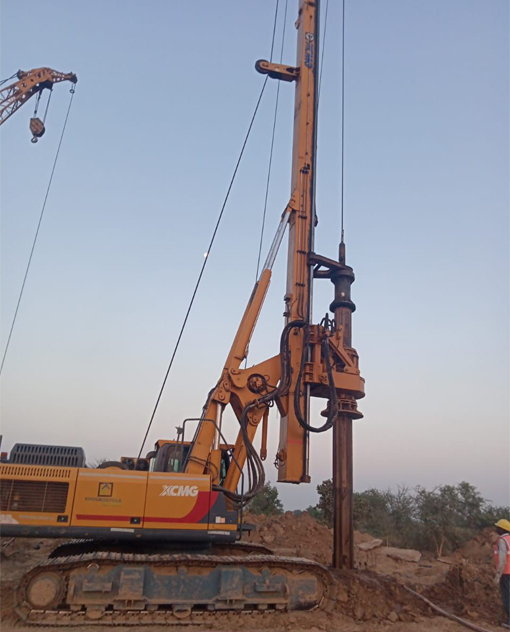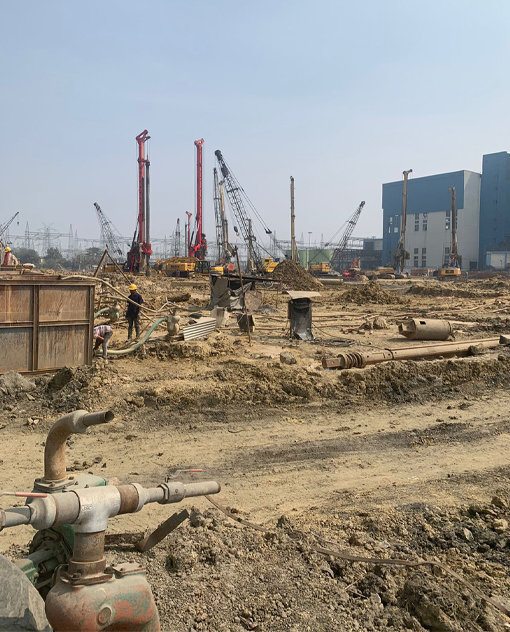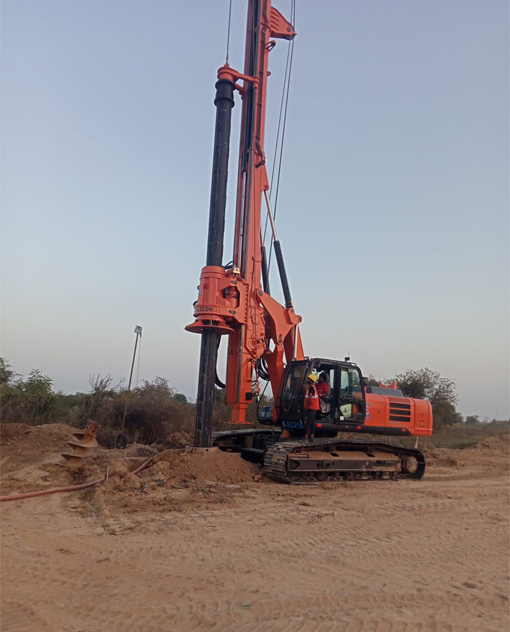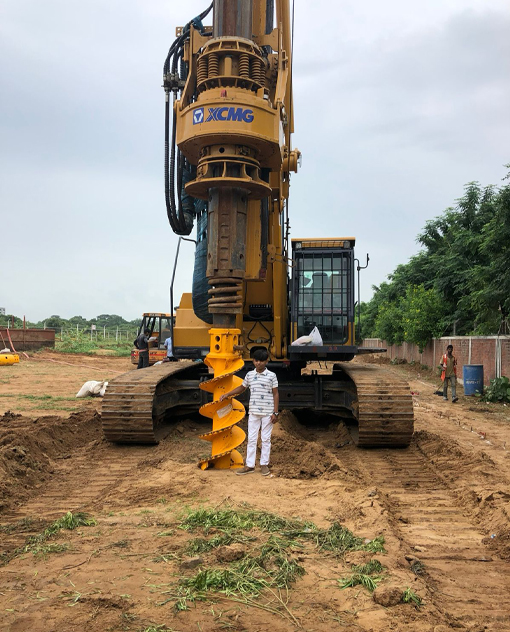Our Product Descriptions
Hydraulic piling rig method is a construction technique employed for driving piles into the ground.
Hydraulic piling rig method is a construction technique employed for driving piles into the ground to provide foundational support for various structures like buildings, bridges, or retaining walls. Here's a breakdown of the process:
The hydraulic piling rig method offers several advantages including efficiency, versatility, and minimal environmental impact compared to traditional methods. Additionally, it can be adapted to various soil conditions and pile types, making it a widely used technique in modern construction projects.
Here's a breakdown of the process
- Preparation : Before commencing piling operations, the site is surveyed to determine soil conditions, load-bearing requirements, and pile dimensions. Access routes are established for the piling rig, and any obstacles are cleared.
- Installation of Piling Rig : A hydraulic piling rig is brought to the site and positioned for optimal access to the designated piling locations. These rigs are equipped with hydraulic systems that provide the necessary power to drive the piles into the ground.
- Pile Driving : The piling rig is fitted with a pile-driving attachment, typically a hydraulic hammer or vibratory hammer. The chosen attachment depends on soil conditions and the type of piles being used.
- Hydraulic Hammer : This attachment delivers impact force to the pile, driving it into the ground through a series of blows.
- Vibratory Hammer : Instead of impact, this attachment uses vibrations to drive the pile into the ground. It's particularly useful in dense or hard soil conditions.
- Pile Installation : As the pile-driving process progresses, piles are installed sequentially at predetermined intervals along the foundation footprint.
- Monitoring and Adjustment : Throughout the piling process, the progress is monitored to ensure that piles are being installed to the required depth and alignment. Adjustments may be made to the piling rig or technique if necessary to overcome any encountered challenges.
- Completion and Testing : Once all piles are driven to the specified depth, the piling operation is completed. Quality assurance checks may include integrity testing to verify the load-bearing capacity of the installed piles.
- Cleanup and Site Restoration : Any excess materials are cleared from the site, and the area is restored to its original condition or prepared for further construction activities.



